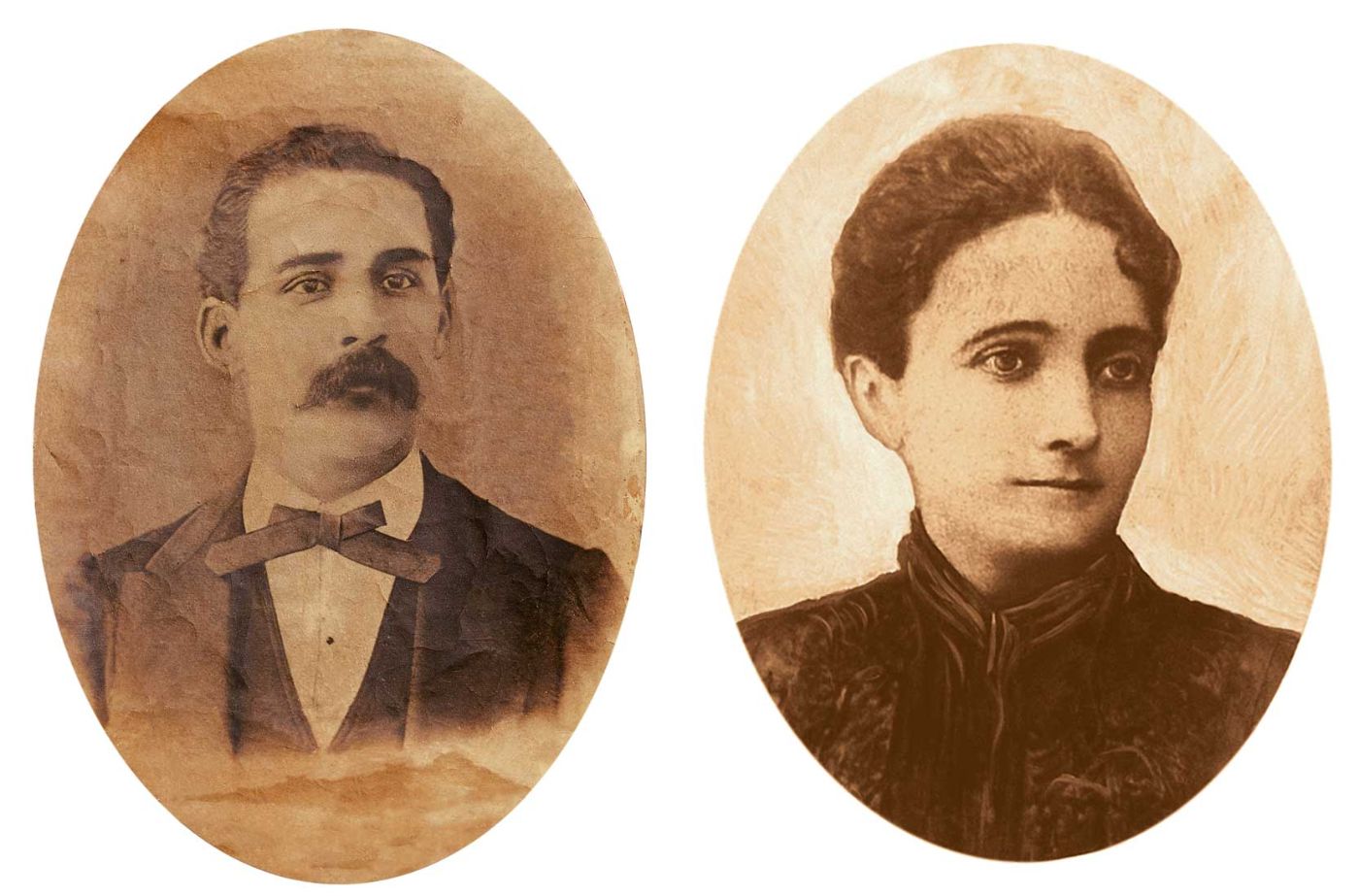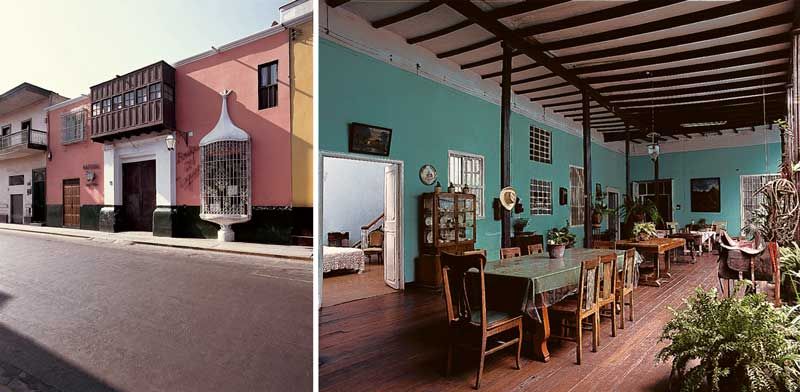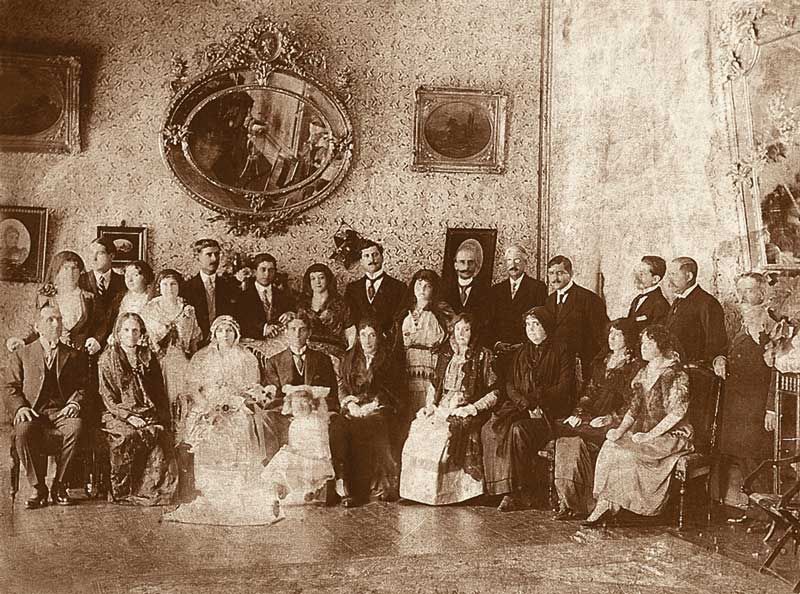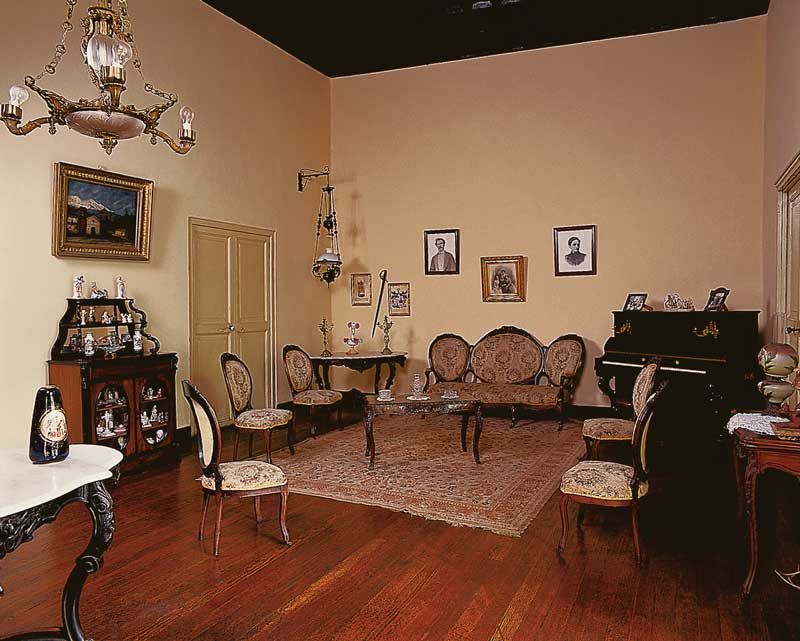Macedonio de la Torrewas born on January 7, 1893, at the Chuquisongo Hacienda, in the district of Usquil, province of Otuzco, department of La Libertad, into the heart of an old and traditional family from the city of Trujillo, situated on the northern coast of Peru. The mansion in Trujillo where the artist spent his childhood, adolescence and early youth is located on Gamarra Street and is known as the Rosell-Collard house. Its current address is 441, but in times past it was 13. The home maintains its venerable appearance, which includes a simple nineteenth century door, a heavy, chained gate and a Republican balcony with discrete windows. This house and the neighboring residence, which is today home to the newspaper La Industria, are the most prominent monumental vestiges of this centric street formerly known as the “calle de los Plateros.” This thoroughfare, which a century ago was a peaceful artery running northeast to southeast within the heart of the city, is today subject to the intense traffic of pedestrians and vehicles, the contrasting presence of insipid, modern buildings and a proliferation of shops that have disfigured, with their storefront signs and widows, what is left of the ancient residences of yesteryear.

Macedonio de la Torre y González, the painter's father, and Adelaida Collard Mendoza, the painter's mother.
Family home where Macedonio lived during his childhood and youth and back verandah where the painter played in his youth.

The city in which the painter lived was, in the last decade of the XIXth century, a comfortable silent suburb shaken from time to time by grave national incidents such as the tragic Pacific War, in which the city lost many of its sons and suffered the rationing and outrages imposed by the invading army. The wounds inflicted only ten years before had failed to heal. Two years after Macedonio´s birth, battles took place between guerillas led by Nicolás de Pierola´s and the Cacerists. These encounters captivated the passions of the youth of the period. At the end of this century, a long period of political stabilization, marked by a succession of civil governments, took place. These governments sowed the hope for a truly authentic democratic coexistence.
During the last decade of the XIXth century, a renewed faith in progress based on technological and economic development was evident, releasing a push towards modernity throughout Latin America. Evidence of this phenomenon can be found in the fact that anticlericism and liberalism were growing amongst merchant groups in opposition to the perseverant Catholicism practiced by aristocratic families. On Sundays, while these families attended mass, the Mason Lodge known as “Cosmopolita No. 13” raised its blue flag over its locale while the Artisan’s Society, presided over by the anarchist Reinaga, boldly displayed its red flag. Thus, Macedonio and his generation were born during a transition period between two eras. First came Romanticism, with its steamboats, railroads, horses, declining traditional monarchies and the belle époque, whose conclusion was marked by the outbreak of World War I. Then came everything linked to modernity. This era represented everything past in opposition to everything new: electricity, the automobile, the plane, wireless long distance communications, new political ideologies and the iconoclastic manifestations of artistic tendencies, particularly in literature and the plastic arts, which paved the way for revolutionary channels to the creative spirit. These transformations deeply marked those counterparts who were born during the same period as Macedonio, individuals who would exhibit a decisive and leading gravitation towards the fate of culture and politics. Two of the most notable individuals from this period include César Vallejo, born in Santiago de Chuco on March 16th of 1892, and Macedonio’s first cousin, Víctor Raúl Haya de la Torre, born in Trujillo three years after the artist on February 22, 1895. This generation and its “invasion,” foretold by robust magistrate named Manuel Gonzalez Prada, would draw a clear dividing line between the legacies of the former century and the promises, changes, challenges and battles of the XXth century.

Marriage of Eduardo Ganoza y Ganoza and Mercedes de la Torre Collard, Macedonio’s sister.
Current picture of the Main Room of the Family House in Trujillo.
